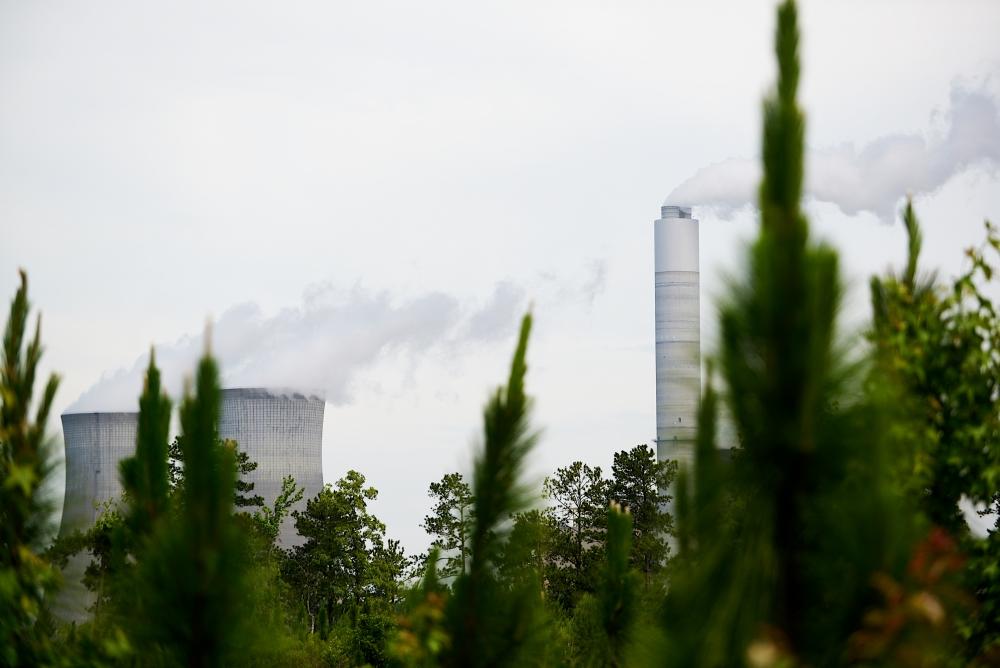
Section Branding
Header Content
New Power Plant Emissions Rules A Possible Boon For Public Health
Primary Content

Mark Goolsby’s family has called Juliette, GA home for almost 200 years.
He doesn’t live in the white two story family home on Luther Smith Road, and probably never will, but his 80 year old mother still does.
“My mother doesn’t want to leave this place. She’s been here 62 years after she married my dad. She doesn’t want to relocate,” Goolsby said.
It’s what’s nearby that gets Goolsby talking relocation. The ash pond for Georgia Power’s coal fired Plant Scherer is just through the treeline across the road. Mark Goolsby believes the plant is what has made his mother sick for years and is what caused the liver cancer that killed his father.
A long standing class action lawsuit alleges the plant has made scores of Goolsby’s neighbors sick with various cancers and respiratory problems. A couple of plaintiffs settled out of court, had their homes bought out and moved away.
But when President Obama announced massive Federal cuts to power plant carbon dioxide emissions last week, he did it in a hospital. The message was clear: controlling power plant emissions is as much about public health as climate change.
Ken Mitchell, Special Assistant to the Clean Air Director for the Environmental Protection Agency in the Southeast, says the agency fully expects the new rules to have a solid public health side effect.
“A really important benefit of this greenhouse gas reduction rule is that we get this co-benefit of a reduction in sulfur dioxide and other chemicals,” Mitchell said.
One of the most prominent of the “other chemicals” is nitrogen oxide. Sunlight can cook it into what we know as smog. Both sulfur dioxide and nitrogen oxide are serious trouble for people who have difficulty breathing. They can lead to both cardiac and respiratory problems.
The good news is that the technologies that will would cut carbon dioxode could cut these chemicals, too.
The EPA is asking states and utilities to make adjustments to hit what they consider an optimal fuel mix by 2030. That mix would be 31 percent coal, 32 percent natural gas and 37 percent other types of fuels.
According to the EPA, coal made up about 33 percent of Georgia’s fuel source in 2012.
Representatives from Georgia Power declined to be interviewed for this story but said in a statement that their expected side effect from the rule change would be untenable price increases for customers. The statement went on to say the company is in the midst of a $5 billion dollar installation of many of the emissions cleaning technologies detailed in the EPA plan across their all of their plants.
Back at his home place, Mark Goolsby swiped at a black dust he said collects on homes and cars. He believes it is coal dust and that it is one of the pollutants that has made his community sick.
The EPA’s Ken Mitchell said Goolsby might be right, but it would take a lot of science to say. But even so, the new carbon dioxide rules wouldn’t reach as far as they dust on Luther Smith Road. That’s probably thrown up by the coal cars as they arrive at the plant.
Mark Goolsby understands that whatever the the new rules might do for health, they won’t do much for his mother.
“Well, my mother will be 96 by then. You know, they can’t clean it up now, it’s still in the air,” Goolsby said.
Tags: health, carbon dioxide, environment, power, emissions, EPA, plant, Grant Blankenship
